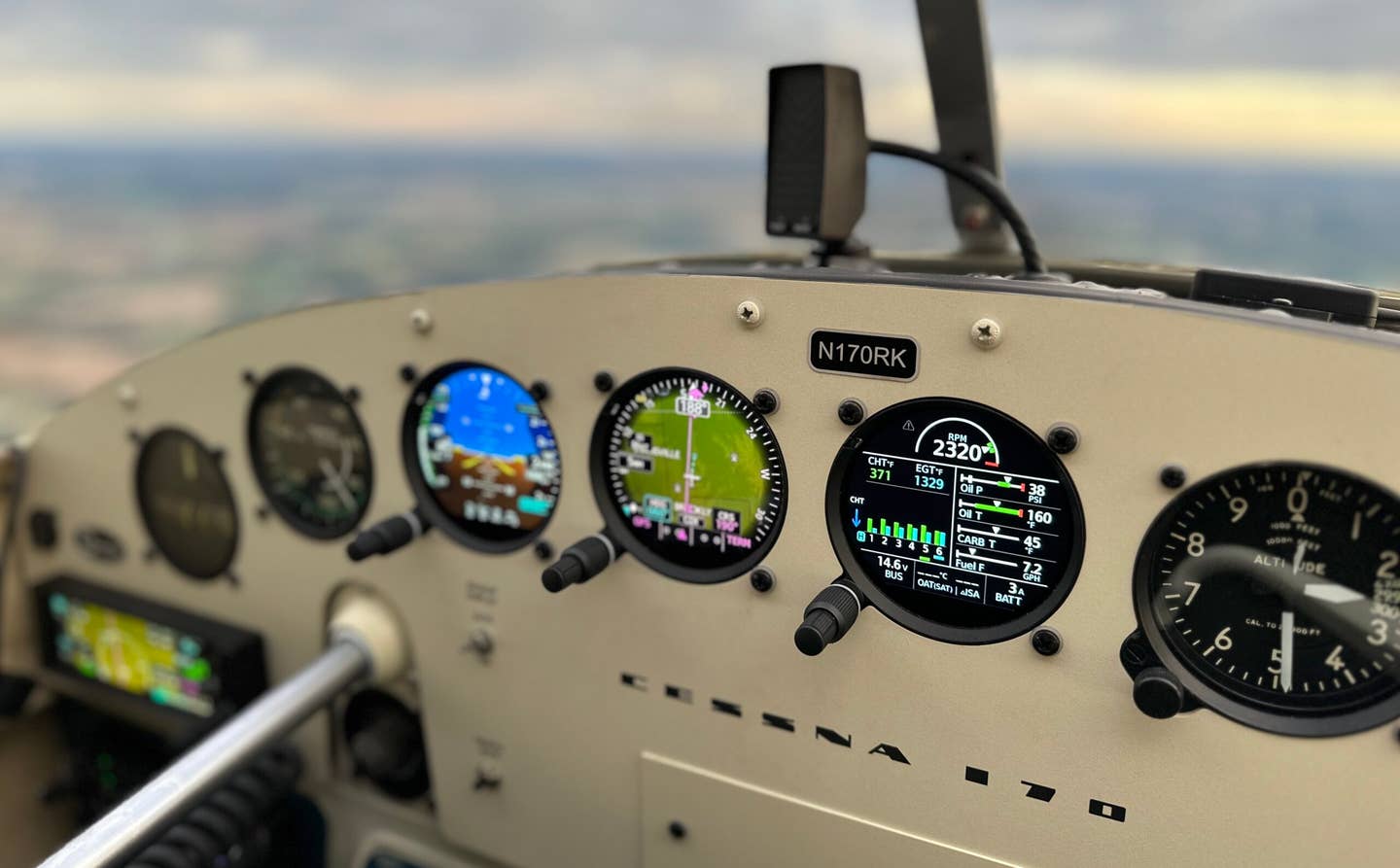The Interplay of Upgrades
When fine-tuning your aircraft, it’s important to understand how one modification might unexpectedly affect another.

Some upgrades are best made in concert with others. A good engine monitor, positioned up high and in the line of sight, can help align one’s flying technique with new modifications. [Courtesy: Jason McDowell]
From the very beginning, I’ve had a thing for testing and evaluating vehicles and gadgets.
Beginning with bicycles and radio-controlled cars in grade school, I’d pore through various magazines and create elaborate custom builds on paper with meticulous detail. I would typically conduct these exercises during class because, frankly, mitochondria and the Louisiana Purchase simply couldn’t compete with CODA Magic cranksets and Novak electronic speed controllers.
Later, after serving several sentences of detention for my inattention in class—during which I continued my builds—I moved on to motorcycles. Before long, I had acquired a BMW R1150GS Adventure and had outfitted it as a formidable overland touring motorcycle. I rode that bike around Lake Superior three times and even from Wisconsin to Maine and back before graduating to the pinnacle of expensive, motorized hobbies: aircraft ownership.
The progression has been rewarding, and I’ve learned that airplanes are even more satisfying to learn, modify, evaluate, and master than land-based machines.
General aviation airplanes provide an intriguing balance of new technology and historical design. I also appreciate how, like bicycles, most airplanes are simple enough for even minor changes and modifications to be readily apparent to the user. Change a set of control arms on a two-ton BMW packed to the gills with electronic wizardry and tomblike cabin insulation, and you might not even notice the change. But installing some tiny vortex generators or 10 pounds of tail ballast in many airplanes will completely transform the flying experience.
As I’ve been modifying my Cessna 170 over the past few years, I’ve enjoyed evaluating each upgrade and change individually. Thus far, the McCauley seaplane propeller, Alaskan Bushwheels, and Garmin panel have been the most impressive. But it’s particularly interesting to evaluate and understand the interplay between these changes—how one modification might unexpectedly affect another.
The most striking example of this involves my Garmin GI 275 EIS engine monitor and the aforementioned McCauley seaplane propeller. Both are outstanding upgrades, but now, having flown with both for over a year, I would never want to install the prop without the engine monitor.
The concern, I’ve come to learn, involves cylinder head temperatures (CHTs). I had an expensive and unfortunate lesson in CHT monitoring on my first lesson in my airplane. The incident resulted in an unexpected top overhaul of my engine and gave me an appreciation for the value of a good engine monitor.
The flatter-pitch seaplane prop introduces huge capability and performance gains for a relatively small investment but also demands careful monitoring of CHTs during climbs. Because the engine turns so much faster during takeoff and climb, the engine becomes hotter. This is exacerbated by the correspondingly lower speeds in climb and cruise.
The difference was eye-opening. On warm summer days, if I simply select maximum throttle for takeoff and keep it there up to cruise altitudes as I did with the standard prop, it’s quite easy to exceed 425 degrees CHT. Had I kept the old digital gauge that displayed just one cylinder—
and did so down on the lower section of the panel—it’s questionable how evident this would be.
The GI 275 EIS, on the other hand, displays each cylinder’s information in bright, crisp color, making it clear and easy to understand, even at a quick glance. Just as importantly, it’s mounted up high on the panel, bringing the information front and center. Positioned here, trends are instantly evident—and particularly when colors change from green to yellow or from yellow to red, they don’t go unnoticed.
Armed with such comprehensive, real-time information about the state of each individual cylinder, I’ve adjusted my flying accordingly. No longer do I simply set the throttle and leave it there for the duration of the climb. Instead, I massage my climb rate and throttle setting to keep my CHTs below 400 degrees.
This requires some concerted effort. It feels odd to reduce power at 1,000 feet agl, and it feels even more odd to momentarily level off at 1,500 feet agl to build airspeed and keep the cylinders cool. But any annoyance is quickly erased by the satisfaction of knowing that the engine is happy and properly cared for.
I love my seaplane prop and unwaveringly recommend it to anyone with a Continental C-145 or O-300 engine. It transforms the thrust and takeoff performance of a 145 hp airplane for a tiny fraction of the cost of an upgraded engine. But it has become clear that the prop alone is an incomplete modification. Without a corresponding engine monitor, pitfalls emerge, and an unsuspecting pilot could learn some lessons the hard way.
So there you have it. Evidence that one fun upgrade can easily justify another. And evidence that a grade-schooler’s time spent poring over their favorite hobbyist magazines during class can pay off later in life.

Sign-up for newsletters & special offers!
Get the latest FLYING stories & special offers delivered directly to your inbox






